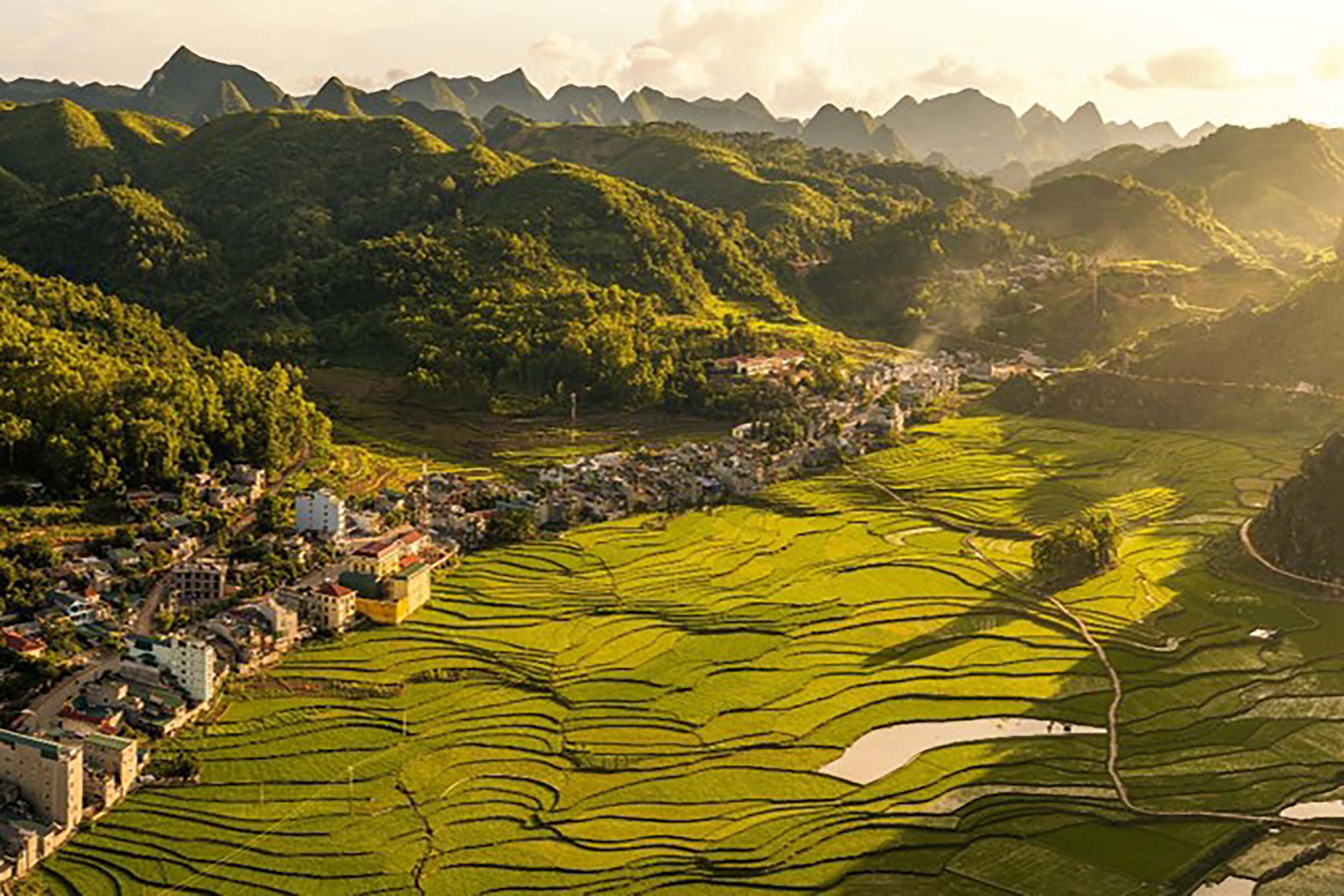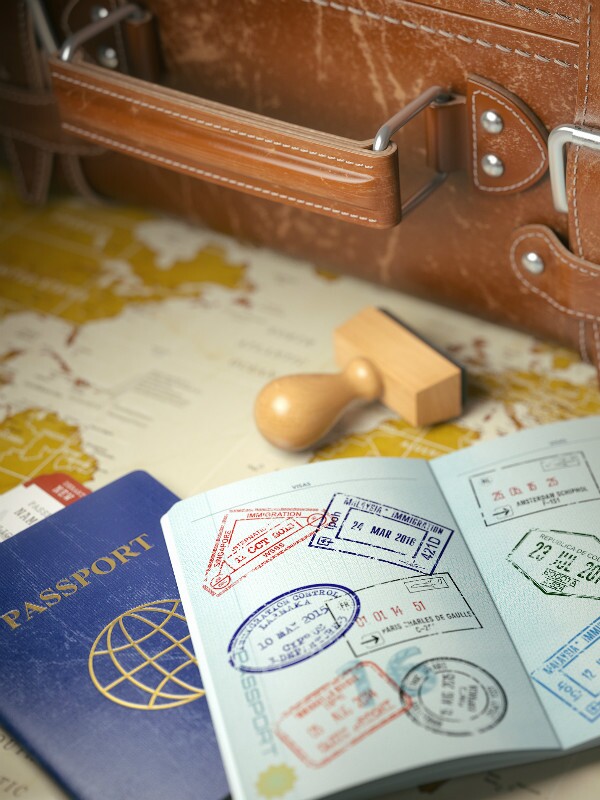Discover the essential entry requirements for visiting Vietnam, including tourist visa requirements, visa on arrival process, necessary documents, visa exemption countries, visa extension procedures, business visa requirements, application form, fees, processing time, and COVID-19 travel restrictions. Learn about the Vietnam e-visa application process.
Table of Contents
Vietnam tourist visa requirements
To visit Vietnam as a tourist, you generally need the following visa requirements:
- Valid Passport: Your passport should have at least six months of validity remaining from the date of entry.
- Visa Approval Letter: If you plan to enter Vietnam by air, you will need to obtain a visa approval letter (also known as a pre-approval letter) before arriving. This letter can be obtained through a travel agency or an online visa service.
- Visa Application Form: Fill out the visa application form with accurate information.
- Visa Fee: Pay the required visa fee, which varies depending on your nationality and the type of visa you are applying for.
- Two Passport-sized Photos: Prepare two recent passport-sized photos (4×6 cm) in color, taken against a white background.
- Entry and Exit Dates: Provide your planned entry and exit dates and specify the intended length of stay in Vietnam.
- Proof of Accommodation: Show proof of accommodation arrangements such as hotel bookings or an invitation letter from a host.
- Travel Itinerary: Submit a copy of your travel itinerary, including details of flights or transportation within Vietnam.
- Sufficient Funds: Demonstrate that you have enough financial means to support yourself during your stay in Vietnam.
- Return Ticket: Present a confirmed return ticket or onward travel ticket to prove your intention to leave Vietnam after your visit.
Please note that these requirements may vary depending on your nationality and the specific type of visa you are applying for. It’s advisable to check with the nearest Vietnamese embassy or consulate or consult official government sources for the most up-to-date and accurate information before planning your trip.
Vietnam visa on arrival process

Vietnam visa on arrival is a convenient process that allows travelers to obtain their visa upon arrival at certain airports in Vietnam. Here are the main steps:
- Apply online: Visit the official website or a trusted travel agency to fill out the visa application form with required details, such as personal information, entry/exit dates, and flight details.
- Pay visa fees: Make the payment online for the visa approval letter, which is an official document issued by the Vietnam Immigration Department. The fees vary depending on the type of visa and processing time chosen.
- Receive visa approval letter: After processing your application, you will receive the visa approval letter via email. This letter confirms your eligibility to pick up the visa on arrival.
- Prepare necessary documents: Before boarding your flight to Vietnam, prepare the following documents: a printed copy of the visa approval letter, a completed entry/exit form (available on the airplane or at the airport), a passport-sized photo, and your passport. Ensure that your passport is valid for at least six months from your entry date.
- Arrival and visa pickup: Upon arrival at one of the designated international airports in Vietnam (Hanoi, Ho Chi Minh City, Da Nang, or Nha Trang), proceed to the visa on arrival counter before going through immigration. Submit your visa approval letter, passport, completed entry/exit form, and photo. Pay the stamping fee in cash (USD or VND). The immigration officers will process your documents and affix the visa stamp into your passport.
- Enter Vietnam: Once you have received the visa stamp, proceed to the immigration checkpoint to get your passport stamped. Collect your luggage and exit the airport to begin your journey in Vietnam.
It’s important to note that visa on arrival is applicable for air travel only. If you enter Vietnam by land or sea, you need to apply for a visa in advance at a Vietnamese embassy or consulate.
Documents needed for entering Vietnam

Passport: A valid passport is required for entry into Vietnam. Make sure your passport is valid for at least six months beyond your planned departure date.
Visa: Depending on your nationality, you may need a visa to enter Vietnam. Check the specific requirements for your country. You can obtain a visa through the Vietnamese embassy or consulate in your home country or apply for an e-visa or visa on arrival.
Entry/Exit Form: Upon arrival in Vietnam, you will be required to fill out an entry/exit form. This form will ask for personal information such as your name, passport details, purpose of visit, and intended length of stay.
Proof of Accommodation: It’s advisable to have proof of accommodation arrangements in Vietnam, such as hotel bookings or a letter of invitation if staying with a friend or relative.
Proof of Sufficient Funds: You may be asked to provide evidence of sufficient funds to support your stay in Vietnam. This can include bank statements, credit cards, or cash.
Return/Onward Ticket: Officials may request proof of a return or onward ticket to ensure that you plan to leave Vietnam within the allowed period.
Travel Insurance: While not mandatory, having travel insurance with medical coverage is highly recommended when visiting Vietnam.
It’s essential to check the most up-to-date information and requirements with the Vietnamese embassy or consulate in your country before traveling.
Vietnam visa exemption countries

Vietnam has visa exemption agreements with several countries. The following countries are currently exempt from requiring a visa for certain durations of stay in Vietnam:
- ASEAN countries: Citizens of ASEAN member countries (Brunei, Cambodia, Indonesia, Laos, Malaysia, Myanmar, Philippines, Singapore, Thailand, and Vietnam) can visit Vietnam without a visa for up to 30 days.
- Belarus: Up to 15-day visa-free stay for citizens of Belarus.
- Denmark, Finland, Norway, Russia, Sweden, South Korea, and Japan: Nationals of these countries can visit Vietnam without a visa for a maximum of 15 days.
- France, Germany, Italy, Spain, and the United Kingdom: Citizens of these five European countries can enjoy visa-free entry to Vietnam for up to 15 days.
- Cambodia and Laos: Visa exemption is granted for stays of up to 30 days for citizens of Cambodia and Laos.
- Philippines: Filipinos can travel to Vietnam without a visa for up to 21 days.
- Singapore and Thailand: Residents of Singapore and Thailand can visit Vietnam without a visa for up to 30 days.
Please note that the duration of visa-exempt stays may vary and is subject to change, so it’s always best to double-check with the relevant embassy or consulate before traveling to Vietnam.
Vietnam visa extension procedures

To extend a Vietnam visa, follow these procedures:
- Contact the local Immigration Office in Vietnam: Locate the nearest immigration office and inquire about their specific requirements for visa extensions.
- Prepare necessary documents: Typically, you will need your original passport, filled-out application form for visa extension, and a passport-sized photo. Additional documents may be required, such as proof of travel plans or accommodation bookings.
- Complete the application form: Fill out the visa extension application form accurately and provide all the required information.
- Submit your application: Visit the Immigration Office with your documents and submit your application for visa extension. Be prepared to pay the visa extension fee at this time.
- Await processing: The processing time varies, but it typically takes a few working days. During this period, your passport will be held by the Immigration Office.
- Collect your passport: Once your visa extension is approved, return to the Immigration Office to collect your passport with the extended visa. Pay any outstanding fees, if applicable.
It’s important to note that visa extension requirements and procedures might change over time or depending on individual circumstances. Therefore, it is recommended to contact the local Immigration Office or consult with a reliable travel agency for up-to-date and accurate information regarding Vietnam visa extensions.
Entry requirements for Vietnam business visa
To enter Vietnam on a business visa, you will typically need the following:
- Valid Passport: Ensure your passport is valid for at least six months beyond your planned arrival date in Vietnam.
- Visa Approval Letter: Obtain a visa approval letter issued by the Vietnamese Immigration Department or a recognized travel agency. This letter confirms your eligibility for a business visa.
- Visa Application Form: Complete a visa application form, which can be obtained from the Vietnamese embassy/consulate or completed online if available.
- Passport Photos: Prepare two recent passport-sized photos (usually 4×6 cm) taken against a white background.
- Visa Fee: Pay the required visa fee, which may vary depending on your nationality and the duration of stay.
- Invitation Letter: Provide an invitation letter from a company or organization in Vietnam. This letter should state the purpose of your visit, details of the company/organization, and your intended duration of stay.
- Travel Itinerary: Present a detailed travel itinerary outlining your planned activities while in Vietnam.
- Proof of Accommodation: Show proof of accommodation arrangements such as hotel reservations or a letter of sponsorship from a host in Vietnam.
- Return Ticket: Possess a confirmed return ticket or onward travel ticket to demonstrate your intention to leave Vietnam after your business activities are complete.
- Financial Means: Have sufficient funds to cover your expenses during your stay in Vietnam. This could include bank statements, credit cards, or cash.
It’s important to note that visa requirements and processes can change, so it’s advisable to check with the nearest Vietnamese embassy or consulate for the most up-to-date information specific to your situation.
Vietnam visa application form
The Vietnam visa application form is a document that needs to be completed when applying for a visa to enter Vietnam. It typically includes personal information such as your full name, passport details, date of birth, nationality, and intended travel dates. Other details may include the purpose of your visit, intended duration of stay, and accommodation information.
The application form may vary depending on the type of visa you are applying for, such as tourist, business, or work visa. It is important to accurately fill out the form, ensuring all information is correct and matches your passport details.
In addition to the application form, you will likely need to submit other supporting documents such as a valid passport, passport-sized photographs, proof of travel arrangements, and proof of financial means to cover your stay in Vietnam.
Once you have completed the application form and gathered all necessary documents, you can submit your application through the appropriate channels, such as at the nearest Vietnamese embassy or consulate, or through an online visa application service provided by the government or authorized agencies.
It’s essential to check the latest requirements and procedures for Vietnam visa applications, as they may be subject to change. It is advisable to consult official sources or contact the relevant Vietnamese authorities for up-to-date and accurate information.
Vietnam visa fees and processing time
Vietnam visa fees and processing time vary depending on the type of visa and the processing method. Here’s a general overview:
- Visa Fees: The cost of a Vietnam visa can range from around $25 to $135, depending on factors such as visa type, duration, and number of entries. Fees may also vary for different nationalities.
- Processing Time: The processing time for a Vietnam visa can be categorized into two options:
- Normal Processing: This usually takes 2-7 business days, depending on the type of visa and the embassy or consulate you apply through.
- Urgent Processing: If you need your visa urgently, you can opt for expedited services. These typically include express processing (1-2 business days) or even same-day processing in some cases. However, expedited services often come with higher fees.
It’s important to note that these are general guidelines, and specific fees and processing times may vary depending on the visa type, nationality, and where you apply (embassy, consulate, or online). It is advisable to check with the nearest Vietnamese embassy or consulate or visit the official website of the Ministry of Foreign Affairs of Vietnam for the most accurate and up-to-date information regarding visa fees and processing times.
COVID-19 travel restrictions for entering Vietnam
As of my knowledge cutoff in September 2021, the COVID-19 travel restrictions for entering Vietnam included the following measures:
- Entry limitations: Vietnam restricted entry for most foreign nationals, allowing only certain categories of travelers, such as diplomats, experts, investors, and Vietnamese citizens’ relatives.
- Visa requirements: Travelers need to obtain a visa before arrival in Vietnam, and visa-on-arrival services were suspended during that time.
- COVID-19 testing: All travelers entering Vietnam were required to undergo COVID-19 testing before departure and upon arrival. Additional quarantine and testing measures may have been implemented depending on the traveler’s origin and other factors.
- Quarantine protocols: Depending on the circumstances, individuals entering Vietnam were typically subject to a mandatory 14-day quarantine at designated facilities or hotels, with associated costs to be borne by the traveler.
Please note that these restrictions were subject to change, and the specific requirements may have been updated since then. It is always advisable to check with the relevant authorities or consult official sources for the most up-to-date information before planning any travel to Vietnam.
Vietnam e-visa application process
Vietnam e-visa application process requires the following steps:
- Visit the official website of the Vietnam Immigration Department or the Vietnamese government’s e-visa portal.
- Fill out the online application form with your personal details, including passport information and travel details.
- Upload a scanned copy of your passport’s biographical page (PDF format) and a recent passport-sized photo (JPG format).
- Pay the e-visa processing fee using the available online payment methods.
- Submit your application and wait for it to be processed. The processing time typically takes around 3-5 working days.
- Once approved, you will receive an electronic visa (e-visa) via email. Make sure to print out a copy of the e-visa or have it readily accessible on your mobile device.
- When entering Vietnam, present your printed e-visa or show it on your mobile device to the immigration officer along with your passport.
Note: The e-visa is valid for a single entry and allows for a stay of up to 30 days in Vietnam. It is important to carefully check the validity dates before traveling.

